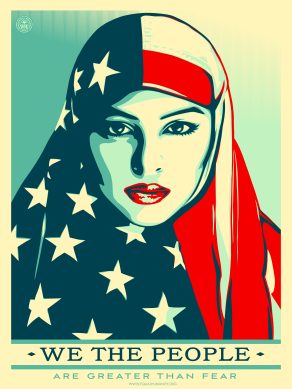I have an obligation to write about the inauguration of President-elect Donald Trump this week. I could have chosen any number of politically-adjacent or apolitical topics on which to focus, but doing so would simply echo the alarming attempts at denial and escapism among my artistically inclined friends, family and colleagues. In response, I felt it my duty to speak on some of the major issues facing my community this week.
Fear of the unknown results in strange behaviors when it comes to the cultural and artistic community. Those for whom the potential threat of the coming months is overwhelming seem to have determined that protesting the results of the most recent American election should take the form of a cautious, quiet opting-out of typical activities, artistic or otherwise.
But those who would gladly remain tucked away in their safe spaces while American society threatens to change for the worse should consider the vital role they could be playing in setting the tone for resistance against cultural and artistic freedom. According to the Philip Kennicott at the Washington Post, “as Trump opponents look to the next four years, they want to know how much cultural and moral capital is stored in the institutions they love. Will museums and universities and arts centers be up to the challenge of confrontation, resistance and truth-telling?” [1]

Hope is on the horizon. Some creatives have been mobilizing for weeks. Fear has sprung grassroots protesters into action, resulting in a counter-culture of artistic resistance that has consistently gained strength from the moment Trump was elected. Knitters have made hundreds of thousands of pink pussy hats that will abound at the Women’s March on Washington and the sister marches being held across the country [2][3][4].
Artists Shepard Fairey, Ernesto Yerena, and Jessica Sabogal, thanks to a wildly successful microfunding campaign on Kickstarter, created beautiful newspaper-size posters embodying diversity, inclusion, progress and equality that will be printed in the Washington Post on Friday, Saturday and Sunday of inauguration week [5][6]. And despite planned protests and marches nation-wide, as well as the call for a ‘culture strike’ in response to the election of a president who seems determined to destabilize and defund the arts, many major cultural institutions have determined to not only remain open, but to make themselves more accessible as a safe haven for patrons seeking truth and free expression on January 20th [7][8][9].

The culture strike itself has been maligned as a seemingly counterintuitive way of resisting the threat of overbearing political rule. After all, in response to concerning governmental and political practices, shouldn’t artists be making MORE art? In fact, the strike should not be interpreted as a call for institutions to cease sharing art and truth with the public; rather, it is an invitation for artists to express their feelings about the current state of American politics in ways that are resistant, subversive, and unapologetically against the actions of the future administration, according to Artnet [10].
Another hopeful thread of cultural discussion has arisen out of the announcement that the 1855 painting “The Verdict of the People” by George Caleb Bingham will hang behind President-elect Trump during his luncheon with Congress. Chosen by congress, the painting depicts simultaneous joy and despair in reaction to the results of an election, a seemingly appropriate topic. Art historians, however, have pointed out that this particular election helped determine the legality of slavery in Kansas, and was surrounded by political turmoil, including violence against abolitionists.

The selection of this particular painting is an achingly appropriate microcosm of the Trump campaign slogan ‘Make America Great Again,’ which has come to be closely associated with white supremacy. Philip Kennicott puts it simply and effectively: “America never had a golden age to which we should aspire to return; and, like the moment captured in this painting, there’s little innocence in what we often remember as harmless Americana” [11].
The more often we welcome difficult conversations about art, culture and politics, the more able we as a community will be to mobilize against racism, bigotry and hate. If each of us agrees to take a more active role in the country’s political future using any platform available, despite our troubling present, we will help to ensure that truth and freedom of expression are preserved.
Endnotes
[2] http://www.businessinsider.com/pussy-hats-womens-march-washington-trump-inauguration-2017-1
[3] https://www.womensmarch.com/
[4] https://www.womensmarch.com/sisters
[6] http://theamplifierfoundation.org/#download
[8] http://fortune.com/2017/01/19/trump-arts-economy-cuts/
[10] https://news.artnet.com/art-world/art-strike-j20-trump-inauguration-820583
